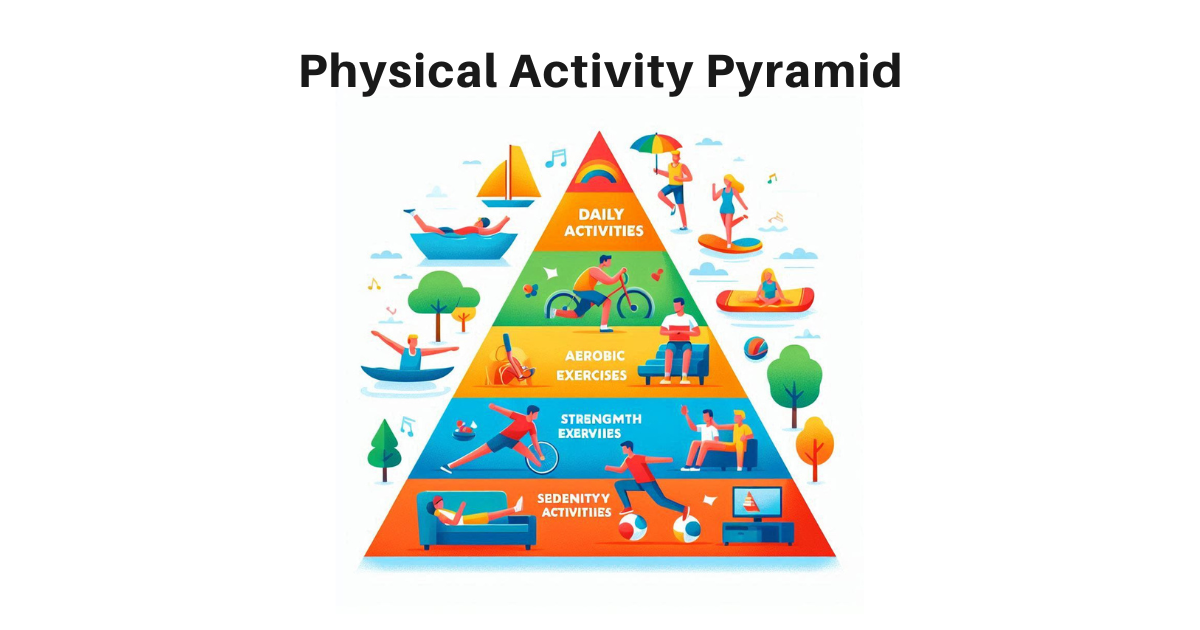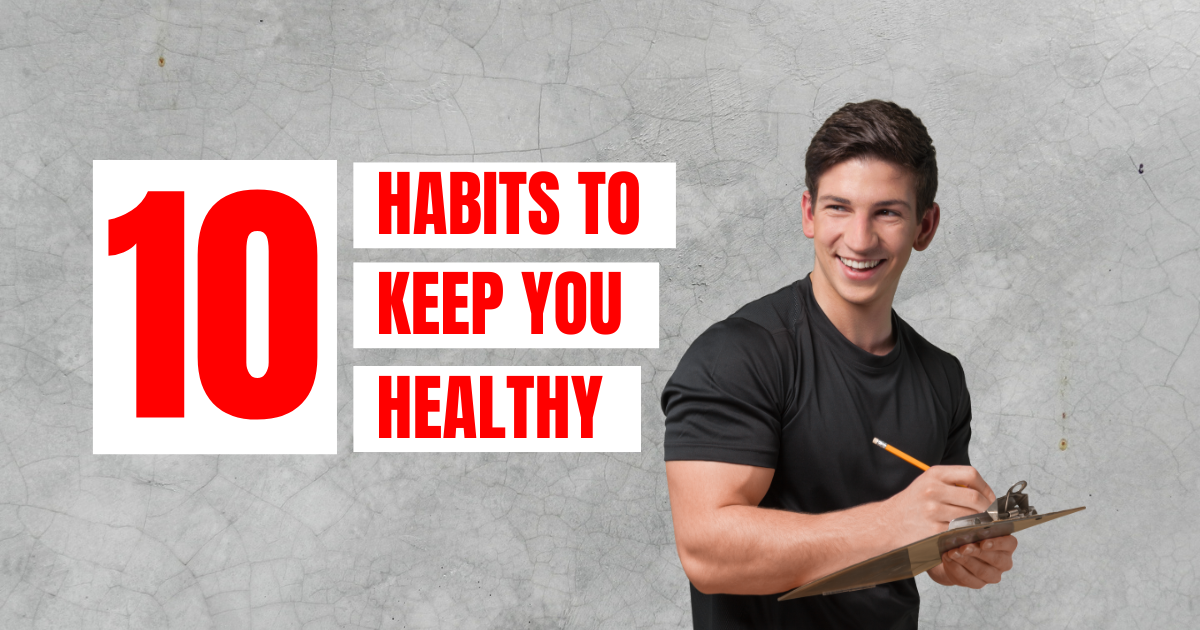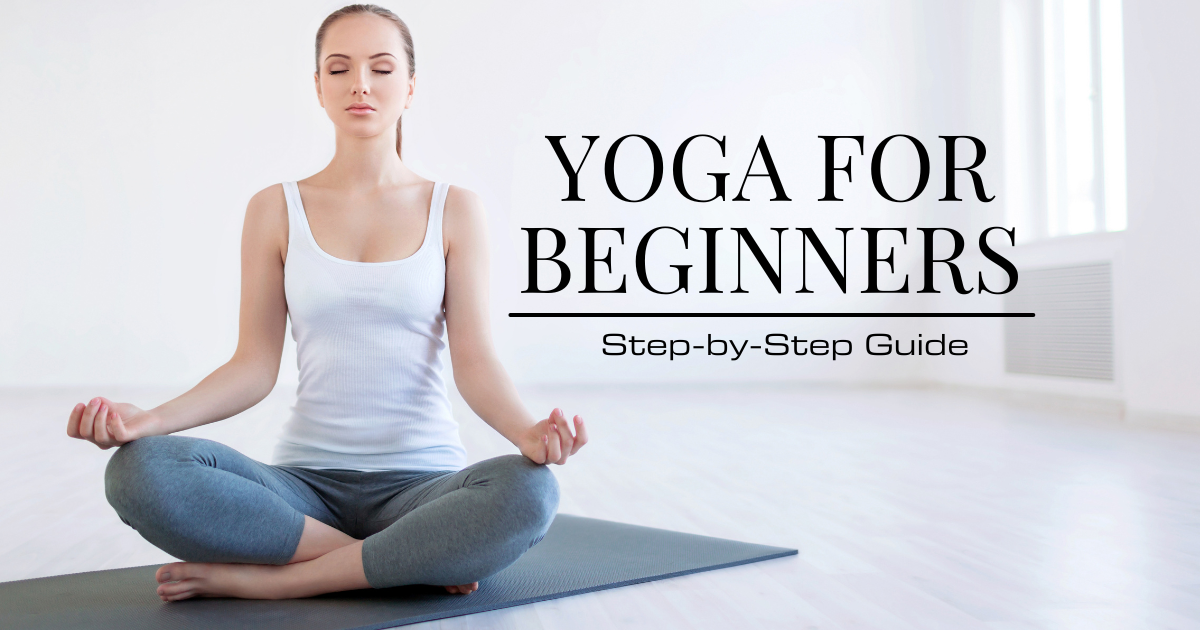Overview
Physical Activity Pyramid A healthy and happy life requires a well-balanced training routine. A simple yet powerful tool for organizing people’s daily physical activities is the Physical Activity Pyramid. You can prevent lifestyle-related diseases and enhance your general well-being by including different forms of exercise into your regimen. The Physical Activity Pyramid, its advantages, and practical advice for incorporating it into your life will all be covered in this blog.
1. What is the Physical Activity Pyramid?
A visual tool called the Physical Activity Pyramid classifies various forms of physical activity according to their frequency and level of intensity. The pyramid, which discourages excessive sedentary behavior and stresses the value of daily movement, was created to support a balanced approach to fitness. You can create a comprehensive exercise program that supports your health objectives by comprehending and putting its tenets into practice.
2. The Levels of the Physical Activity Pyramid
Base Level: Daily Physical Activities
The base of the pyramid stands for commonplace tasks like climbing stairs, walking, or gardening. An active lifestyle is built on these low-intensity motions.
- Examples: Walking to work, house cleaning, light yard work.
- Why It Matters: Daily movement helps improve circulation, boost energy levels, and maintain joint flexibility.
- Frequency: Aim for 30 minutes of moderate physical activity most days of the week.
Level Two: Aerobic Exercise and Recreational Activities
This level includes moderate to vigorous aerobic exercises that elevate your heart rate.
- Examples: Jogging, swimming, dancing, cycling.
- Benefits: Enhances cardiovascular health, improves stamina, and supports weight management.
- Guidelines: Perform at least 150 minutes of moderate aerobic or 75 minutes of strenuous activity weekly.
Level Three: Strength and Flexibility Exercises
Strength and flexibility workouts are essential for maintaining muscular health and preventing injuries.
- Examples: Weightlifting, yoga, pilates, stretching routines.
- Why It Matters: Builds muscle mass, strengthens bones, and improves posture.
- Recommended Frequency: At least two days a week.
Top Level: Sedentary Activities
The pyramid’s tip represents activities to minimize, such as prolonged sitting and excessive screen time.
- Risks: Sedentary behavior contributes to obesity, heart disease, and mental health issues.
- Tips: Take short breaks to stand or stretch during long periods of inactivity.
3. Benefits of Following the Physical Activity Pyramid
Advantages of the Physical Activity Pyramid Following the Physical Activity Pyramid has many benefits. It helps with physical health as it improves heart functioning, muscle strength and flexibility. It is also known for its effects on mental wellness; decreasing stress, anxiety, and depression while elevating the general mood. Following the pyramid’s guidelines can also reduce the risk of chronic diseases like diabetes, hypertension and obesity. In addition, this helps the formation of sustainable, healthy habits, and results in enhanced quality of life.
4. Tips for Incorporating the Physical Activity Pyramid into Your Life
- Set Realistic Goals: Begin with simple steps and progressively improve your activity level.
- Mix It Up: Include various activities to target different fitness components.
- Address Barriers: Overcome challenges like time constraints by scheduling shorter, more frequent workouts.
- Stay Accountable: Use fitness apps or enlist a workout buddy.
5. Common Myths About Physical Activity and Fitness
Myth 1: “You need to work out for hours every day to see results.”
Reality: Consistency matters more than duration.
Myth 2: “Strength training makes you bulky.”
Reality: It helps build lean muscle mass and boosts metabolism.
Myth 3: “Flexibility exercises are only for yogis.”
Reality: Stretching benefits everyone by improving mobility and reducing injury risk.
6. How to Tailor the Physical Activity Pyramid to Your Lifestyle
Ideal for the Busy Professional → If you are someone who’s very busy, you just want to stay active but don’t have a whole lot of time, then high-intensity interval training (HIIT) workouts can really offer a good solution. Both hiking and cycling are family-friendly activities that allow you to enjoy the outdoors while spending quality time with your parents. For Older Adults, low-impact exercises such as tai chi and the use of resistance bands will help maintain strength and flexibility without straining the body.
7. The Role of Nutrition in Supporting Physical Activity
- Balanced Meals: Ensure adequate protein, carbs, and healthy fats to fuel workouts.
- Hydration: Drink plenty of water before, during, and after exercise.
- Recovery Foods: Include post-workout snacks like a banana with peanut butter or a protein smoothie.
8. Technology and Tools to Enhance Your Fitness Journey
- Fitness Apps: Track steps, monitor calories, and set fitness goals.
- Wearable Devices: Use smartwatches or fitness trackers to measure progress.
- Online Resources: Access workout videos and virtual fitness classes.
9. Importance of Rest and Recovery
- Rest Days: Rest days are essential for promoting muscle recovery and growth.
- Quality Sleep: If you want to speed up your recovery, sleep between seven and nine hours every night.
- Active Recovery: On days you’re supposed to rest, do light things like walks or gentle yoga.
10. Community and Support for Staying Active
Join Groups: Participate in local fitness classes or sports teams.
Accountability Partners: Exercise with friends or family for motivation.
Online Communities: Share progress and gain inspiration from others.
11. The Long-Term Advantages of Regular Exercise
Longevity: Regular exercise helps one lead a longer, better life.
Mental Health: Sustained activity reduces the risk of depression and cognitive decline.
Habits That Stick: Create an exercise routine that becomes an automatic part of your daily life.
FAQs: Physical Activity Pyramid
Q1: How often should I engage in activities from each pyramid level?
Try for daily movement, 150 minutes of aerobic exercise every week, and twice a week strength growth.
Q2: Can I skip some levels if I’m already active in others?
Balance is key; try to include activities from all levels for optimal benefits.
Q3: What are some practical tips for reducing sedentary time?
Use a standing desk, take frequent breaks, and set reminders to move every hour.
Q4: How can beginners start incorporating the pyramid into their lives?
Begin with small, manageable goals like 10-minute walks and build up gradually.
Q5: Are there specific activities better suited for weight loss?
Combine aerobic exercises with strength training for effective weight management.
Conclusion
The Physical Activity Pyramid provides a thorough framework for attaining improved health and balanced fitness. You can lead a more active and satisfying lifestyle by combining activities from every level, establishing reasonable goals, and placing a high value on consistency. See how your health improves by starting small and maintaining your motivation. Please use the comments area below to ask questions or to share your journey.





